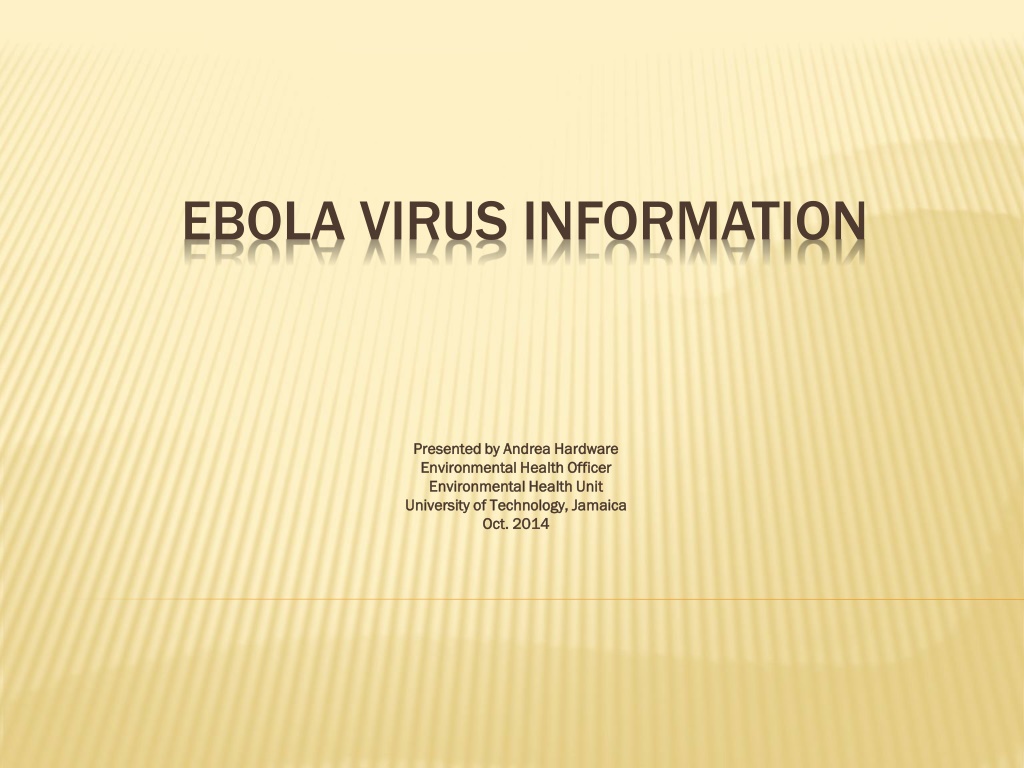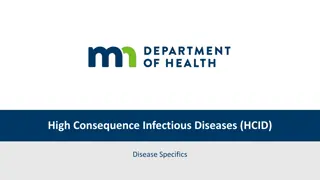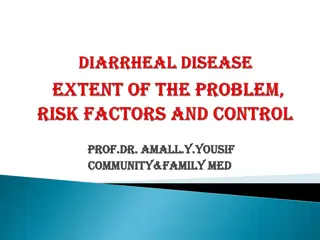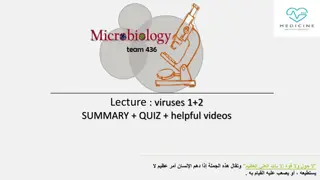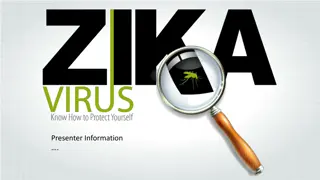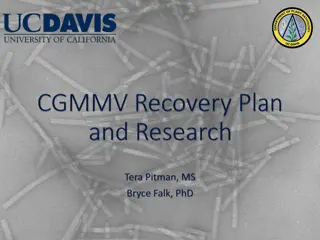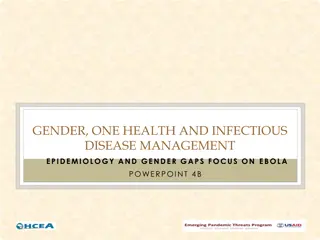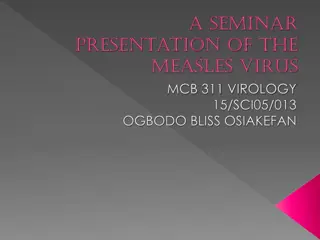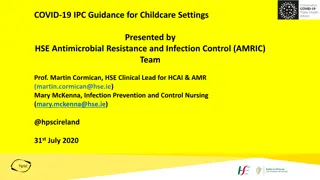Understanding Ebola Virus: Information and Prevention Measures
Ebola Virus, a rare and deadly disease caused by infection with one of the Ebola virus strains, can affect humans and nonhuman primates. The disease is primarily transmitted through bodily fluids, contaminated objects, and infected animals. Outbreaks have occurred in various countries, but to date, there are no reported cases in the Caribbean region. Prevention measures include practicing good hygiene, wearing personal protective equipment, and proper sanitization of surfaces.
Download Presentation

Please find below an Image/Link to download the presentation.
The content on the website is provided AS IS for your information and personal use only. It may not be sold, licensed, or shared on other websites without obtaining consent from the author. Download presentation by click this link. If you encounter any issues during the download, it is possible that the publisher has removed the file from their server.
E N D
Presentation Transcript
EBOLA VIRUS INFORMATION Presented by Andrea Hardware Presented by Andrea Hardware Environmental Health Officer Environmental Health Officer Environmental Health Unit Environmental Health Unit University of Technology, Jamaica University of Technology, Jamaica Oct. 2014 Oct. 2014
WHAT IS EBOLA? Previously known as Ebola hemorrhagic fever, it is a rare and deadly disease caused by infection with one of the Ebola virus strains. Ebola can cause disease in humans and nonhuman primates (monkeys, gorillas, and chimpanzees).* There are five identified Ebola virus species, four of which are known to cause disease in humans: Ebola virus Zaire Zaire ; Sudan Reston has caused disease in nonhuman primates, but not in humans.* Sudan, Forest Forest, Bundibugyo Bundibugyo and Reston Reston . Most recent outbreaks have been in Guinea, Liberia, Sierra Leone and the Democratic Republic of Congo.** To date, there are no reports of cases in the Caribbean region.** The natural reservoir host of Ebola virus remains unknown. However, on the basis of evidence and the nature of similar viruses, researchers believe that the virus is animal-borne and that bats are the most likely reservoir. * *Sources: CDC website: http://www.cdc.gov/vhf/ebola/about.html **Ebola Preparedness Response Plan for outbreak Control; Min. of Health, Jamaica ;Rev 2. 12 Oct. 2014. 2
FACTS ABOUT EBOLA How do you get Ebola Virus? Bodily fluids of a person who is sick with or has died from Ebola e.g. blood, urine feces, saliva, vomit, sweat, semen.** Objects contaminated with the virus e.g., needles, soiled clothing, bed linen and medical equipment** Infected animals e.g. by contact with blood, fluids or infected meats.* Sources: *Sources: CDC website: http://www.cdc.gov/vhf/ebola/about.html **Ebola Preparedness Response Plan for outbreak Control; Min. of Health, Jamaica ;Rev 2. 12 Oct. 2014. 4
ENVIRONMENTAL INFECTION PREVENTION AND CONTROL HAND WASHING HAND WASHING with soap for approximately 40-60 seconds**. Rinse with clean running water. WEAR PERSONAL PROTECTIVE EQUIPMENT WEAR PERSONAL PROTECTIVE EQUIPMENT (PPE goggles) if one must participate in any cleanup activity associated with spills from body fluids and soiled material/equipment. (PPE )(e.g. nitrile gloves, face mask or RESPIRATORY HYGIENE RESPIRATORY HYGIENE : Cover mouth and nose when coughing or sneezing with single use cloth. Perform hand hygiene after wards.* SANITIZATION SANITIZATION Of surfaces with one of the following: alcohol based products** Sodium hypochlorite (bleach)** Calcium hypochlorite (bleach powder)** Use a 1:10 solution of bleach to water (e.g., 1 cup of bleach in 9 cups of water)* Sources: *Cleaning and Decontamination of Ebola on Surfaces. Guidance for Workers and Employers in Non-Healthcare/Non-Laboratory Settings; OSHA Fact Sheet. **Ebola Preparedness Response Plan for outbreak Control; Min. of Health, Jamaica ;Rev 2. 12 Oct. 2014. Sources 6
